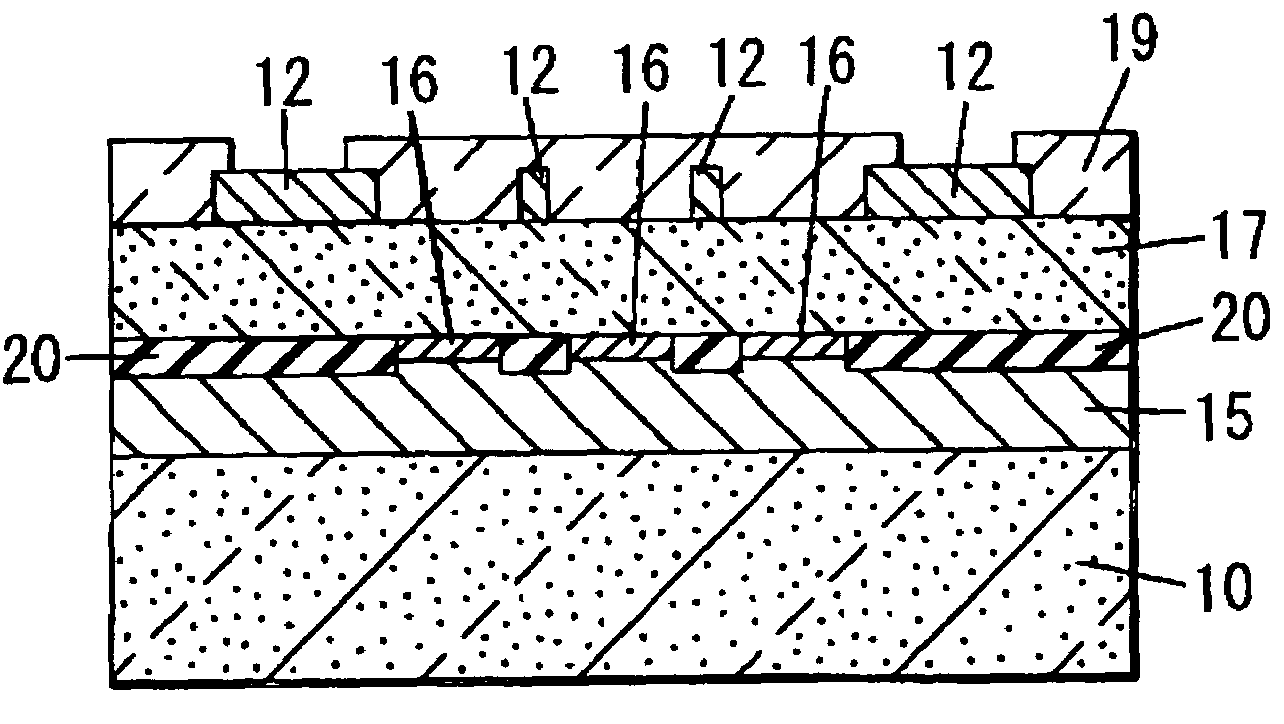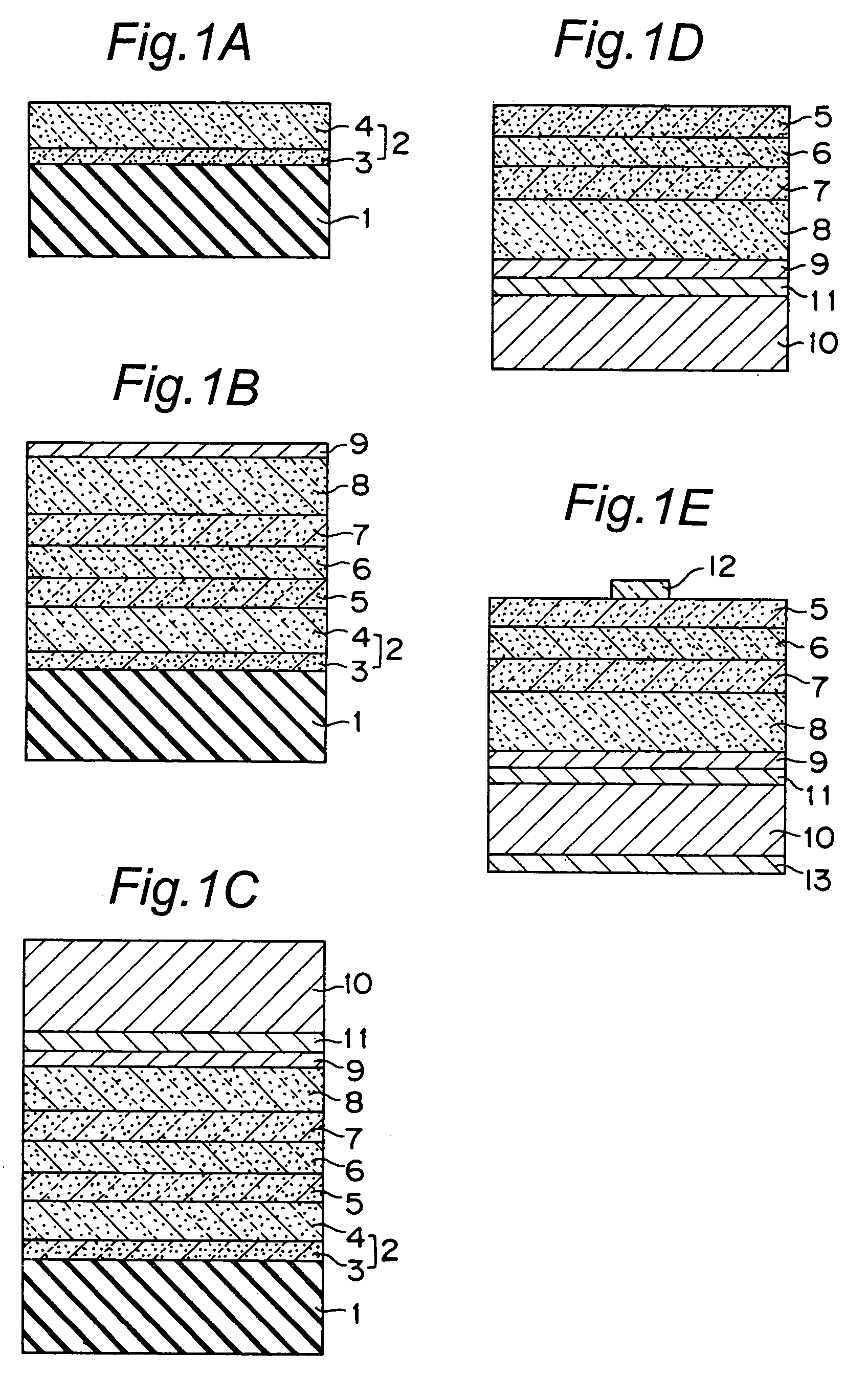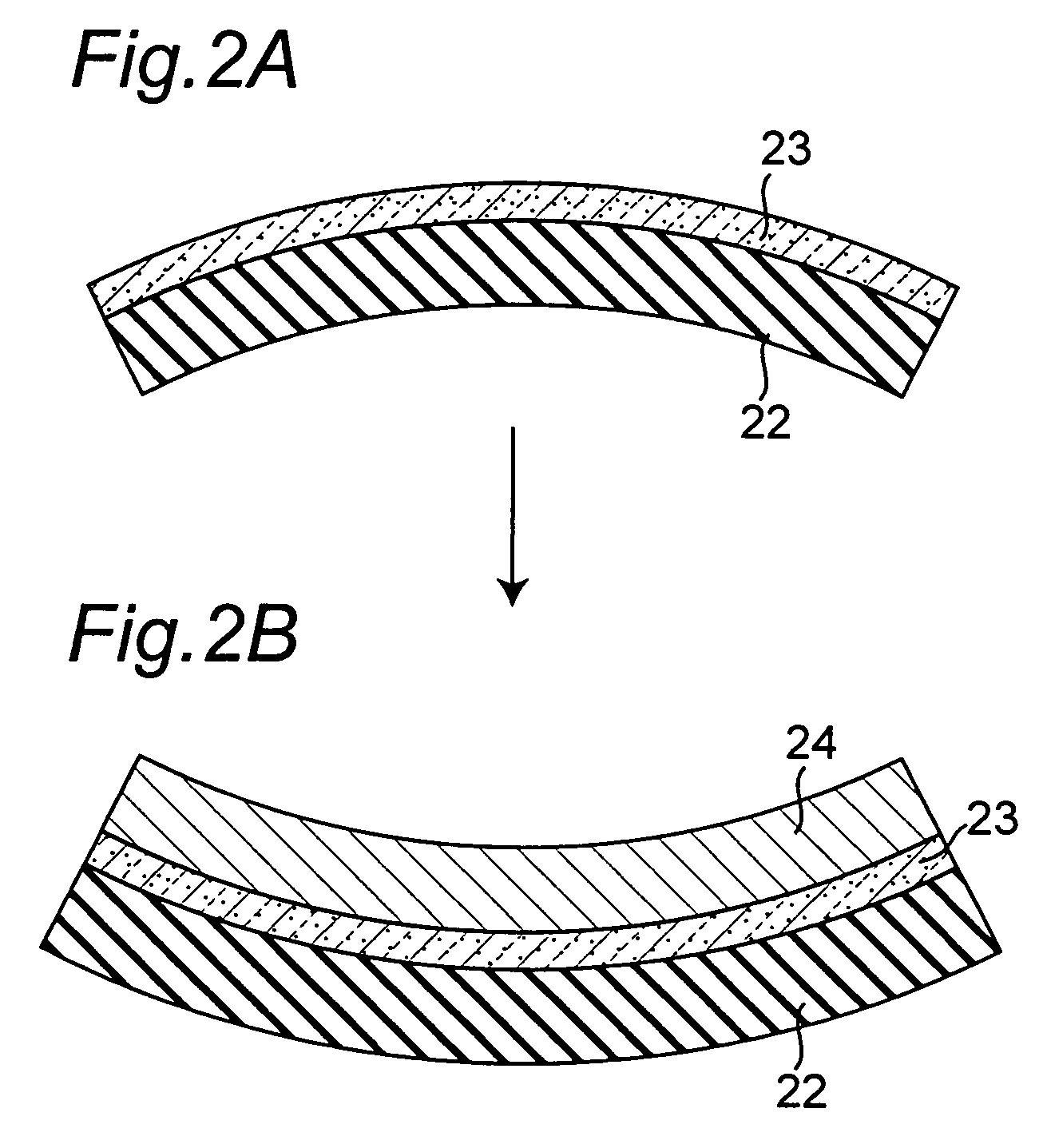Nitride semiconductor device comprising bonded substrate and fabrication method of the same
a technology of nitride and semiconductor devices, which is applied in the direction of semiconductor devices, superconductor devices, electrical devices, etc., can solve the problems of low device structure, low thermal conductivity, and limited device size, so as to reduce the size of the device and reduce the structure of the devi
- Summary
- Abstract
- Description
- Claims
- Application Information
AI Technical Summary
Benefits of technology
Problems solved by technology
Method used
Image
Examples
example 1
[0169]In this Example, the invention was applied to a light emitting diode with 375 nm wavelength and a nitride semiconductor device was produced according to a fabrication method of the invention as illustrated in FIGS. 1A to 1E.
(Substrate for Growing Nitride Semiconductor)
[0170]A substrate of sapphire (C-plane) was used as a substrate for growing nitride semiconductor 1 and surface cleaning was carried out at 1,050° C. in hydrogen atmosphere in a MOCVD reaction vessel.
(Under Layer 2)
[0171]Buffer layer 3: Successively, a buffer layer 3 of GaN in a thickness of about 200 Å was grown on the substrate at 510° C. in hydrogen atmosphere using ammonia and TMG (trimethylgallium).
(High Temperature Grown Layer 4)
[0172]High temperature grown layer 4: After growth of the buffer layer 3, a high temperature grown nitride semiconductor 4 of undoped GaN in 5 μm thickness was grown on the substrate by stopping only TMG supply, increasing the temperature to 1,050° C., and using TMG and ammonia as r...
example 2
[0185]An LED obtained in the same manner under same conditions as those of Example 1 except that the p-type electrode in the first bonding layer with a thickness of 2,000 Å was formed using Ag had output power of 5.8 mW and Vf of 4.2V.
example 3
[0186]This Example was carried out under same conditions as those of Example 1 except that the laser radiation method was employed in place of the polishing method at the time of removing the substrate for growing nitride semiconductor 1.
(Removal of Substrate for Growing Nitride Semiconductor 1)
[0187]With respect to the laminate for bonding to which the conductive supporting substrate 10 was bound, laser beam in linear state of 1 mm×50 mm was radiated with an output power of 600 J / cm2 to the entire surface of the opposed face of the sapphire substrate 1 from the under layer side by scanning using KrF excimer laser with wavelength of 248 nm. The nitride semiconductor of the under layer 2 was decomposed by the laser radiation to remove the sapphire substrate 1.
[0188]The obtained LED had luminescence peak wavelength of 373 nm at 20 mA electric power in forward direction and had Vf of 3.47 V and output power of 4.2 mW. Further, as compared with the case of Example 1, since the sapphire ...
PUM
| Property | Measurement | Unit |
|---|---|---|
| luminescent wavelength | aaaaa | aaaaa |
| thickness | aaaaa | aaaaa |
| thickness | aaaaa | aaaaa |
Abstract
Description
Claims
Application Information
 Login to View More
Login to View More - R&D
- Intellectual Property
- Life Sciences
- Materials
- Tech Scout
- Unparalleled Data Quality
- Higher Quality Content
- 60% Fewer Hallucinations
Browse by: Latest US Patents, China's latest patents, Technical Efficacy Thesaurus, Application Domain, Technology Topic, Popular Technical Reports.
© 2025 PatSnap. All rights reserved.Legal|Privacy policy|Modern Slavery Act Transparency Statement|Sitemap|About US| Contact US: help@patsnap.com



